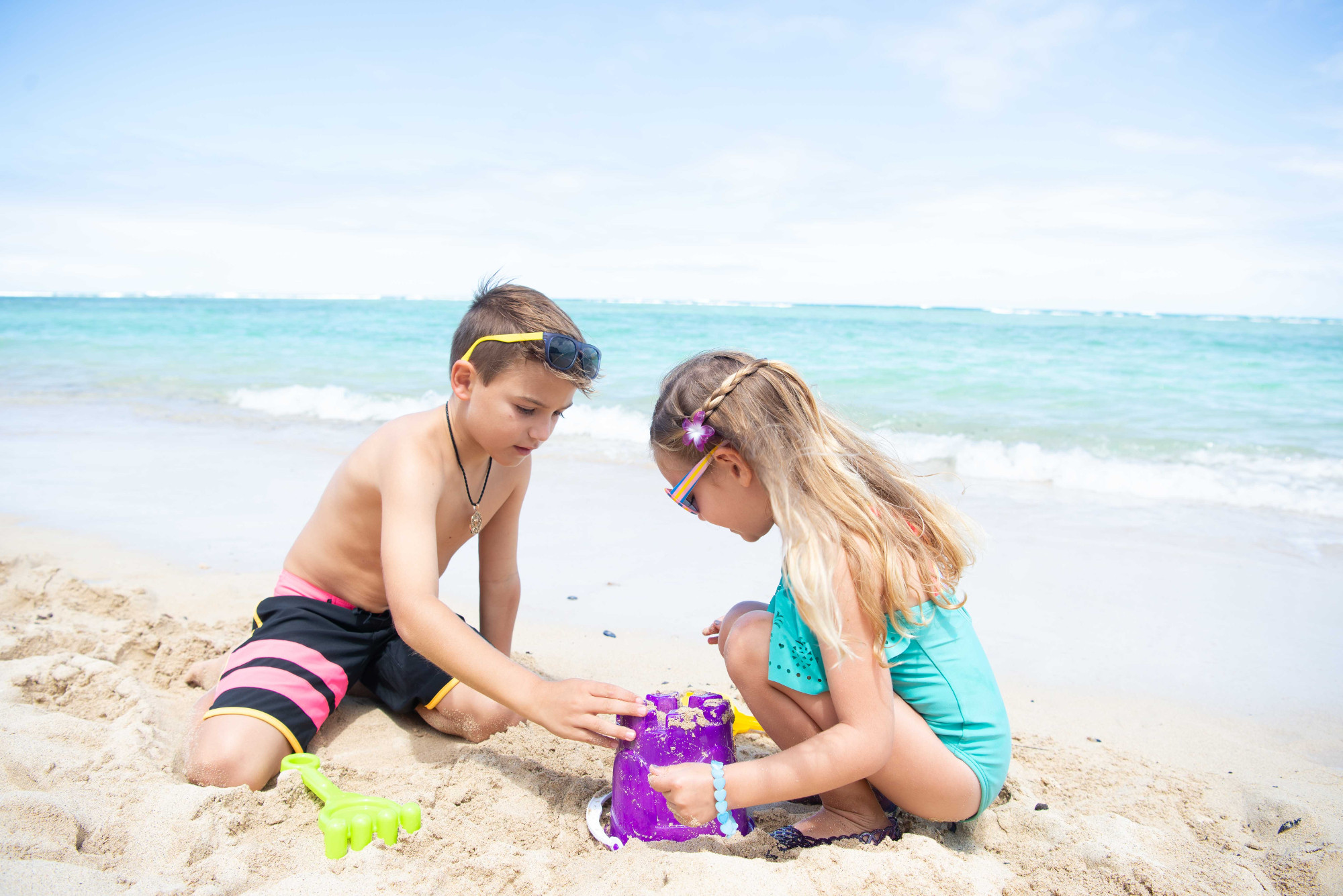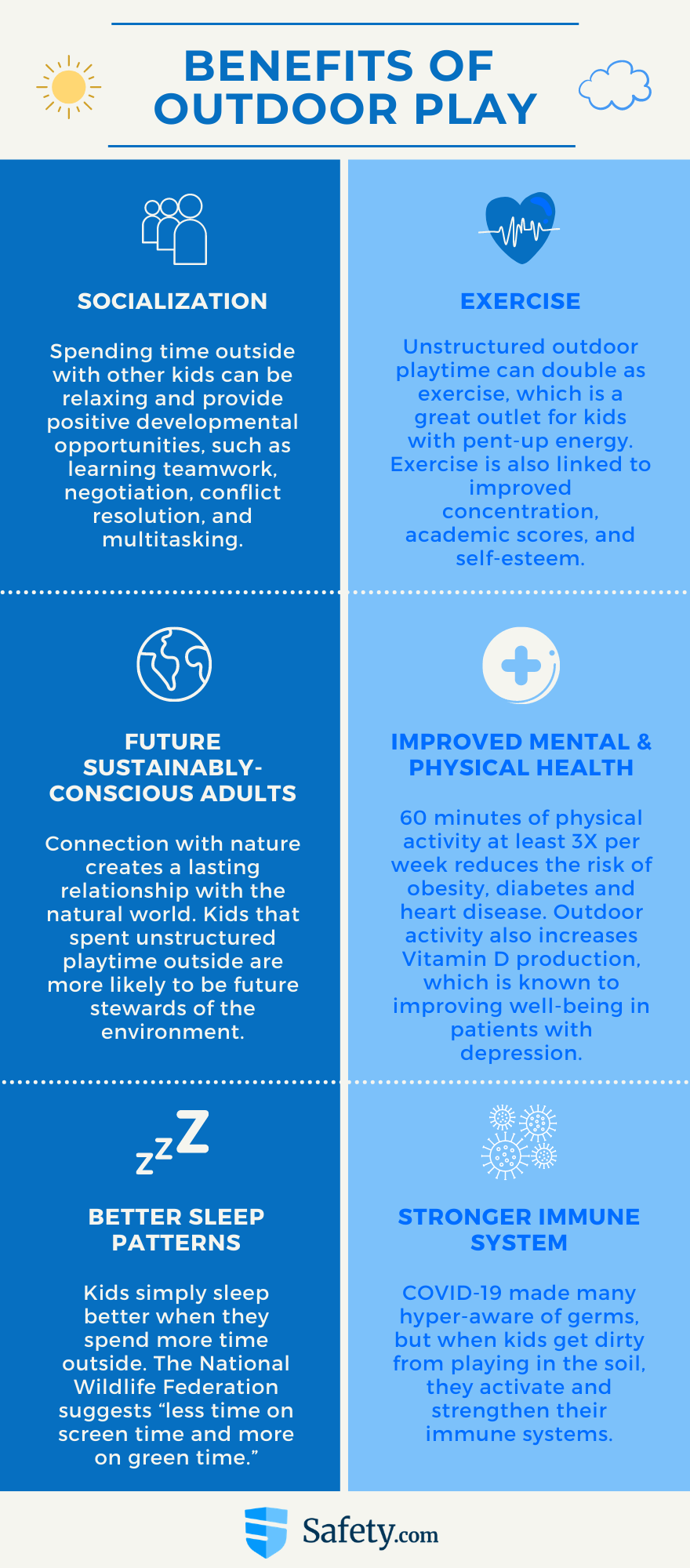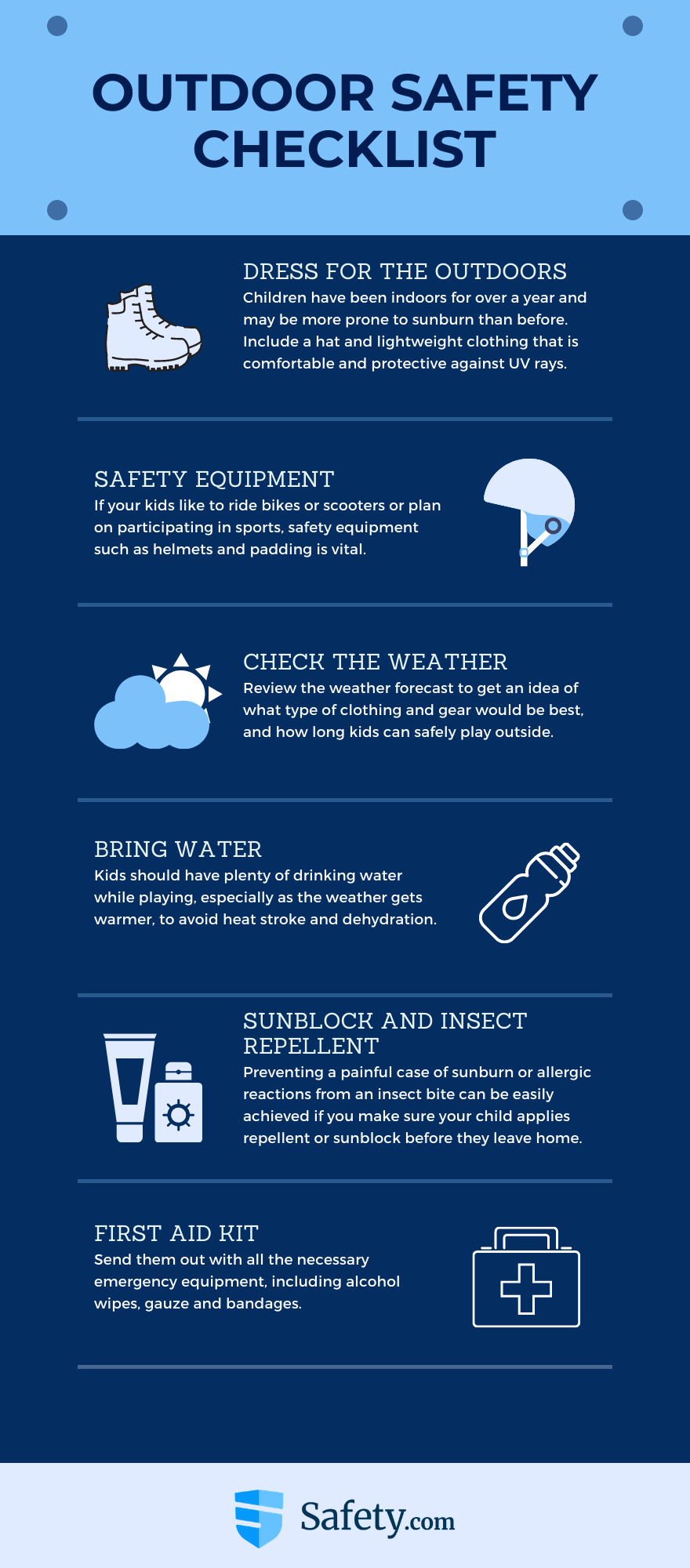
When you’re family is outside having fun in the sun this summer season, you’ll want to keep everyone safe and smiling at the same time. Our friends over at Safety.com provide some excellent tips and guidance for keeping kids safe and healthy while they’re enjoying the great outdoors.
Outdoor time for kids is an essential part of their development. Unfortunately, the average amount of unstructured outdoor playtime for most children has been four to seven minutes per day, pre-pandemic. Coronavirus lockdowns have made matters worse, forcing even the most active kids to stay indoors.
As a parent, guardian or childcare provider, you may have noticed that the abrupt change to children’s daily habits has made it challenging to curb device overload. In most cases, the best way to conquer hyper-reliance on screens and beat the indoor blues is by putting devices away and getting back outside.
It’s the perfect time to encourage kids to explore the outdoors. The weather is warming up, and COVID-19 restrictions are lifting. However, some kids (and adults) may be struggling with whether it’s safe to play outside again. There are plenty of reasons families need to step out of their comfort zones to reconnect with sunshine, sand, soil, and friends. With a bit of planning, the benefits for your child’s overall well-being and development far outweigh the drawbacks.
Children’s Mental Health and Playing Outdoors
Global studies on the impact of the COVID-19 lockdown found that children and young adults have exhibited pandemic-related stress in a few ways:
Underprivileged kids and those with special needs may be suffering (and acting out) the most. Underprivileged children may not have the same level of parental support or access to proper nutrition and a safe environment at home. Children with special needs may be regressing to past difficult behaviors due to their limited coping skills and the interruption to their sacred, daily routines.
According to Kait Towner, LMHC, RPT, CCPT, IMH-E, a Licensed Mental Health Counselor and Registered Play Therapist, “Children that stay inside more frequently, particularly those diagnosed with ADHD, have pent-up energy. This unreleased energy can lead to the child experiencing emotional dysregulation on a consistent basis. Exerting energy by having your child play outside is an easy way to combat this emotional dysregulation, leading to a happier child and happier home.”
Outdoor Activities Reduce Stress, Improve Mood and Overall Well-Being
The studies found that stress buildup in kids eventually leads to insomnia, irritability and appetite change. A great relief for the levels of unreleased stress is outdoor time.
The initial transition to more outdoor activities can be challenging. After all, kids have been indoors for a year or longer, connected to their screens more than ever. Towner explains, “Children that stay inside and engage in screens are more likely to be increasingly irritable, have an addictive relationship with their screens/devices, and have increased difficulties transitioning to different tasks.”
According to Towner, persistence is key. “Children who have caregivers that set firm limits and boundaries in regards to screen time are more likely to be more emotionally regulated, have a healthy relationship with screens, and an overall easier time transitioning.” The warmer weather is the perfect time to limit indoor screen time and gently nudge your kids to venture outside.
The Role of Nature in Well-Being
Time outside may be beneficial in general, but not all outdoors are created the same. Although much of the world’s population lives in urban areas, humans are hardwired for nature specifically. Even the most disconnected individual will typically start getting comfortable outdoors and learn to appreciate the peace and beauty of nature.
However, a love of the outdoors that leads to healthier, happier kids often starts with the parents. Dr. Jessica Myszak, a child psychologist and the director of The Help and Healing Center, says, “More than anything else, parents can help children embrace the outdoors and opportunities to socialize safely by modeling these behaviors themselves.” You’re probably familiar with the old saying, “Do as I say and not as I do,” but it doesn’t work with kids in today’s day and age.
Dr. Myszak adds, “Screen time has been more prevalent in all of our lives, and as parents’ work and home lives have blurred, being able to turn off the computer, silence the phone, and engage in play and fun activities will speak volumes. Showing children that you are willing to do it will be much more effective than anything you would say to them.”
The inertia aspect of getting kids outside after such a long time of lockdown is initially challenging. Like a heavy stone, getting it to budge at first requires the most energy, but once it’s rolling, far less effort is needed. Keep persistent — time in nature and increased outdoor playtime have many benefits, including:

Preparing for Potential Outdoor Risks
Kids can be exposed to dangers outside, but with some awareness and preparation beforehand, allowing kids to have free time outside can be a safe experience. Some risks parents should prepare kids of all ages for are:
Roads and highways: Even very young children can learn about the dangers of cars and road rules. Children should avoid playing on or near busy streets and stay away from areas with heavy traffic.
COVID-19: Most kids understand the need for properly wearing a face mask, social distancing and washing hands often. Ensure kids are properly equipped before they go out by having masks and small bottles of hand sanitizer accessible.
Stranger danger: Children should avoid contact with adults they don’t know and who may engage them. Kids should remain in groups with friends for their safety and have someone they know and trust accompany them home.
Falls and injuries: Bumps and bruises happen. An adult should always supervise younger kids at play in case help is needed.
Protection from the elements: Children need to exercise caution from some of the things that they may be drawn to most, such as animals, bodies of water (pools, lakes and rivers) and a hot sunny day. Animals could scratch, bite or cause allergies. Playing around water unsupervised can lead to drowning. And too much time outside on a hot, sunny day could lead to dehydration and sunburn.
Playground hazards: Playground equipment occasionally breaks and may not be safe for use. It’s a good idea to perform a quick visual inspection before letting your kids use the equipment.
How to Limit Risk Without Limiting Outdoor Play
The biggest challenge in keeping kids safe outdoors is not limiting free play. Kids need some freedom — finding the right balance takes effort. Some ideas to reduce risk without reducing the fun are:
Start small: A family bike ride, a nature hike with your child or climbing a tree are fun and socially distant ways to be outside. Slowly transitioning your child to being outside safely may be a better idea than thrusting them into a busy playground.
Create a safe place to play: Ensure the opportunities you provide for outdoor time are in a safe, controlled environment, such as a backyard or kid’s park.
Educate your child: Kids aren’t born street smart. They need to learn the skills. As a parent, you can teach your kids the safety ropes that keep them secure regardless of whether you supervise them.
Monitor the area: The most important factor to child safety outdoors is adult supervision. If someone can’t be outside at all times watching, the next best thing is a home security camera that adults can monitor continuously.
Set check-in timers: It’s important that kids have an awareness of time and check in with you periodically to let you know they’re ok. Older kids with a smartphone can send or answer a check-in text. Phone or not, help your kids get into the habit of stopping playtime briefly every half hour or so to run in and let you know they’re ok. It’s easier said than done since time having fun passes quickly, so consider taking on the responsibility yourself by setting a timer to remind you to check on kids playing outside.
Use the buddy system: Kids of all ages should always play or hang out outdoors with a friend or two. If anything should happen, a buddy can ask for help. If a buddy system is not possible, an adult should supervise or make sure that outside play alone is restricted to a controlled environment, such as a fenced-in backyard.
Outdoor Safety Checklist
While it’s only natural for parents to feel concerned about their kids venturing back into the world, It’s necessary to step back and let them resume their everyday life — within limits. Download or print this safety preparation checklist and keep it handy. It may be helpful to review it each time your kid gets ready to go outside.

As we continue making our way through the COVID-19 pandemic, make sure your children also have their masks and a bottle or two of sanitizer to reduce the risk of catching and spreading the virus. Having an outdoor time backpack ready with some of the items mentioned could ensure kids have everything they need to stay safe and protected. Make sure to check the contents before they go out each time and restock the backpack as needed.
Have Fun — Safely
Good news — it appears that the world is slowly returning to normal. Kids and parents have sacrificed so much in the past year for their safety and the safety of those around them. It may be scary at first to return to old outdoor routines (or to build healthier new ones), but some preparation can make the transition smoother. Best of all, the physical and mental benefits of venturing back out into the big, beautiful world are worth it.
Read more from Safety.com here.
